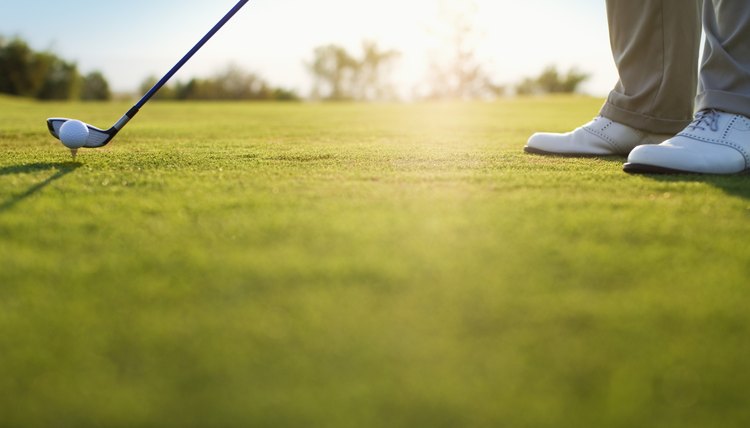The Advantages of 2 Piece Vs. 3 Piece Golf Balls

Golf balls have undergone several transformations throughout the history of the game. From the "gutta percha" and leather-covered "feathery" golf balls of the early 1900's to the high-performance four-piece golf balls of today, golf balls have perhaps experienced more changes than clubs. Two of the more common constructions, the two-piece and three-piece golf balls, are designed for different purposes and may appeal to different types of golfers.
Affordability
Two-piece golf balls are composed of a solid center core with a hard, surlyn cover. Three-piece golf balls, on the other hand, contain a solid or liquid center core, an outer layer composed of rubber and a soft cover. The simpler design of the two-piece construction makes this type of golf ball more affordable in most cases.
Greater Distance
The harder outer layer of the two-piece golf ball provides a more resilient surface upon impact with the club, producing greater distance than most three-piece golf balls. Furthermore, two-piece golf balls generally have greater compression, which is a measure of the ball's springiness when it is struck. Golf balls with greater compression do not collapse as much when struck at very high club speeds, leading to greater distance.
Greater Durability
Aside from distance, durability may be the biggest advantage of a two-piece golf ball. The hard, surlyn cover found on two-piece golf balls are less prone to cuts and scratches. Three-piece golf balls usually contain softer covers composed of balata or elastomer. While these materials produce a much softer feel, they are subject to wear and tear and experience much less life than a two-piece ball.
Harder Feel
Two-piece golf balls produce a harder feel upon impact than three-piece golf balls, making them less advantageous around the green. Some golfers, however, prefer the heavier and more solid feel of a hard golf ball off the tee. The softer feel of a three-piece golf ball often doesn't produce the satisfying "thud" that the two-piece ball does when struck well.
Reduced Spin
Two-piece golf balls produce less spin than three-piece balls. While this is a disadvantage for more advance golfers who need to shape shots and stop the ball quickly around the green, reduced spin may actually help beginning golfers. For golfers who struggle with hooks or slices, a ball with less spin may help them keep more shots in the fairway.
Writer Bio
Graham Ulmer began writing professionally in 2006 and has been published in the "Military Medicine" journal. He is a certified strength-and-conditioning specialist with the National Strength and Conditioning Association. Ulmer holds a Master of Science in exercise science from the University of Idaho and a Bachelor of Science in psychology from Washington State University.
